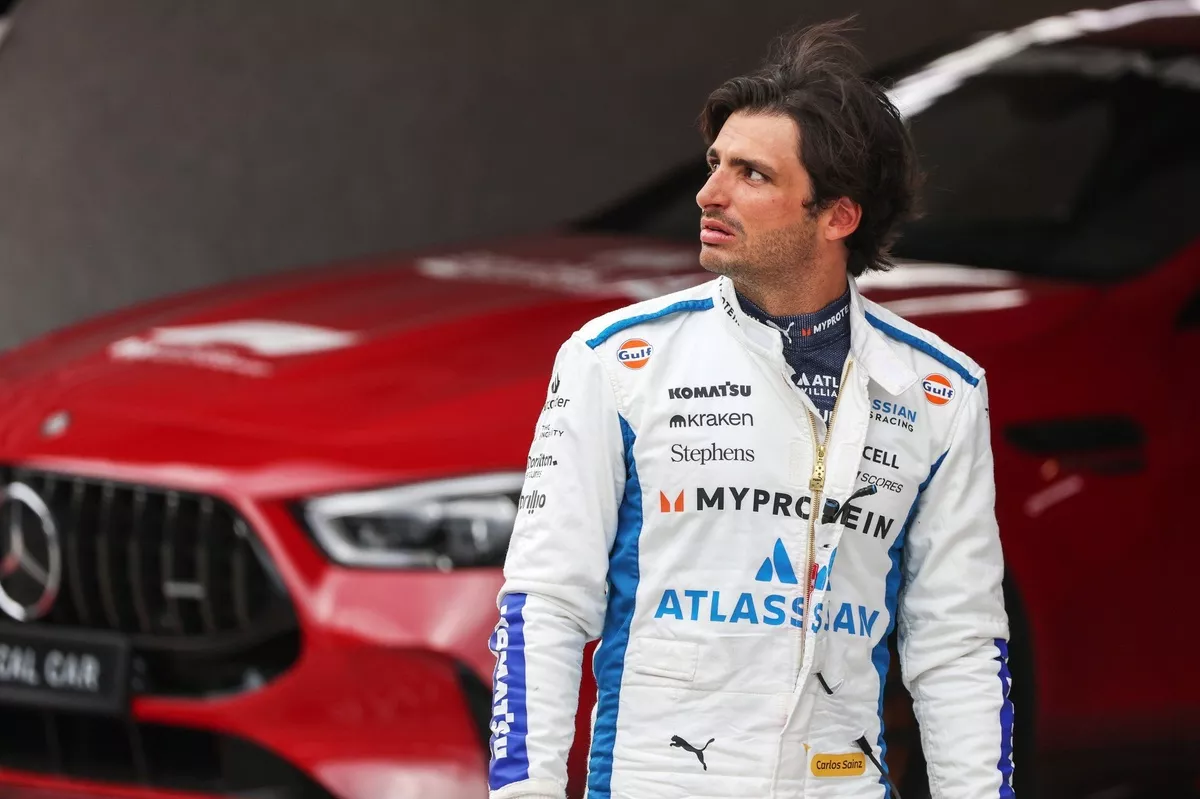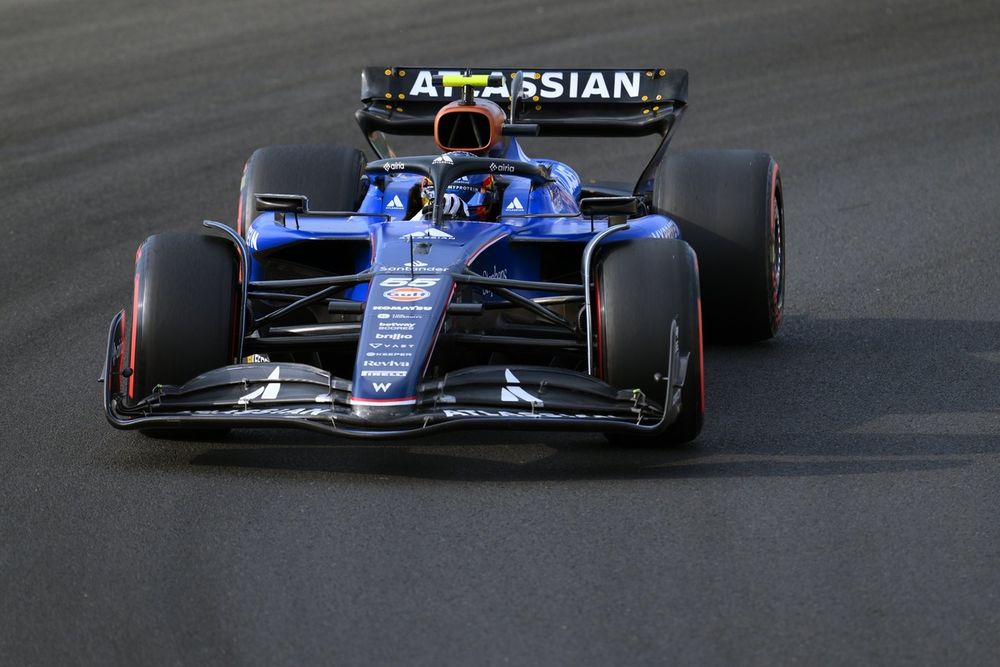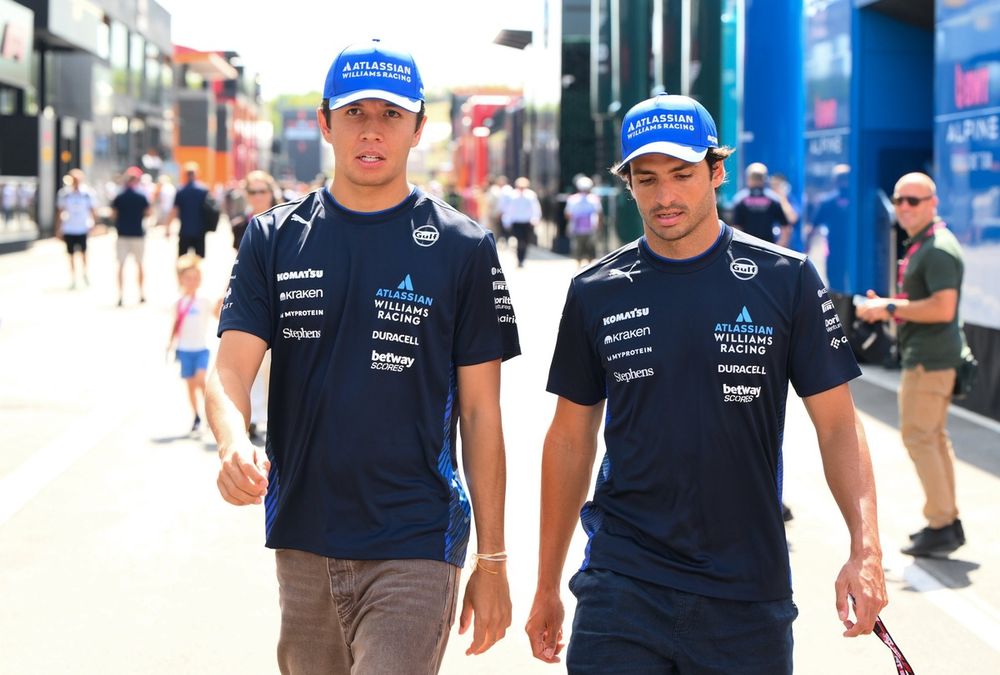
Sainz: Williams Must Change His Philosophy to Be Competitive on Every Track
Carlos Sainz Reflects on Williams’ Progress and Challenges Ahead of 2026 Regulation Changes
Formula 1 is gearing up for a major shakeup with the introduction of new technical regulations in 2026, and while Williams has shown clear signs of progress this season, Carlos Sainz is the first to admit that there’s still a long road ahead if the team wants to be competitive across all circuits next year and beyond.
Having completed his first 14 races with Williams, Sainz offered a candid assessment of the team’s current form, especially after a tough outing in Hungary that seemed to underline some of the ongoing issues the team faces. Despite scoring points in 10 out of 14 races — a marked improvement from previous seasons — the car still carries characteristics from earlier years that limit its overall performance.
What Happened? A Tough Race in Hungary Reflects the Bigger Picture for Williams
Sainz didn’t mince words when talking about the challenges Williams faced at the Hungaroring. “The Hungaroring has always been a difficult track for this team,” he explained. Having come from Ferrari — a team that regularly fights for pole positions and podiums — finishing 13th was a clear reminder of just how much more development is needed.
He elaborated, “I explained clearly why the car was lagging behind on a track like this. There’s nothing we can do about it this year, but I hope this will be a big learning curve so we can be competitive on tracks like Budapest or Barcelona in the future.”
This candid honesty is refreshing from a driver who knows what it takes to compete at the front but also understands the realities of a team in transition. The Williams FW44 through to the FW46 have consistently excelled in high-speed cornering thanks to their aerodynamic setup. However, they’ve struggled with maintaining stable downforce through longer, slower corners — a problem that has caused inconsistent results over the past three seasons.

Carlos Sainz, Williams
The Bigger Picture: Why Williams Must Evolve to Keep Up with Rivals
Carlos Sainz highlighted that the fundamental issue lies in the car’s downforce stability, particularly from the entry to the midpoint of long corners. This problem is not new — it’s something the team has wrestled with for years. While tracks with long straights and short hairpins tend to favour Williams, circuits featuring long, compound corners such as Barcelona, Hungary, and Qatar expose these weaknesses.
“The future requires a major change in design philosophy,” Sainz noted. “We are currently trying to understand what and where we need to change so that next year’s car is much more balanced and provides us with a good platform on different tracks.”
This is an important point because with the 2026 regulations promising to reset many of the technical parameters — including aerodynamics, power units, and chassis design — Williams sees this as a golden opportunity to reinvent their approach. Sainz hopes his experience and feedback from racing this season will be incorporated in the design process, helping the team build a car that’s competitive everywhere rather than just in specific conditions.
What Did Sainz Say About Team Dynamics and Development?
Despite the frustrations with the car’s limitations, Sainz expressed confidence in the team’s direction and the collaborative spirit within the garage. “We’ve made a very strong start in terms of how we want to develop the team, in terms of interaction with Alex (Albon) and James (Vowles, the team principal),” he said.
However, he was quick to point out that gathering feedback is only part of the battle. “But we can’t take that feedback into the wind tunnel and develop the car. That’s where the real challenge comes next year.”
This comment underscores a key issue many teams face: translating driver insights and data into tangible improvements on the track. The coming months will be crucial as Williams seeks to close the gap to the midfield and front-runners by making sure their development work reflects what drivers actually need during race weekends.
Looking Back: Sainz’s Approach to Hungary and the Rest of the Season
Sainz shared that he tried different car setups during the Hungarian Grand Prix weekend but ultimately reverted to configurations similar to those used in Miami and Imola, where Williams performed better. This was a pragmatic choice, acknowledging that the team’s rivals had pulled slightly ahead, especially at a track that doesn’t suit Williams’ current strengths.
“The problem is that our rivals have left us a little behind and we’ve arrived at a track that’s difficult for us,” he admitted.
Going forward, Sainz is focusing on consistency. “I will try to maintain consistency with the setup and the car in the second half of the season, and my priority will be to finish the weekends cleanly.”
This goal might sound modest for a driver who’s used to fighting at the front, but for Williams and Sainz this year, finishing races error-free and steadily collecting points is a vital step in the rebuilding process.

Alexander Albon, Williams, Carlos Sainz, Williams
What Lies Ahead for Williams and Sainz?
The 2026 technical regulations are fast approaching, and teams like Williams know that this will be their biggest chance in years to shake up the hierarchy. Sainz’s frank assessment reveals that for Williams to compete consistently, a radical rethink of the car’s philosophy is necessary.
This includes reworking the aerodynamic balance to improve downforce stability through tricky corners and creating a car that adapts well across a variety of tracks. Sainz hopes his input can help guide the engineers toward these goals.
At the same time, Williams will need to continue improving their operational performance, making sure that design ideas successfully translate into on-track gains. With Sainz’s experience from top teams and his evident desire to push Williams forward, there’s reason for cautious optimism.
In Conclusion: Sainz’s Honest Take on Williams’ Journey Toward Competitiveness on Every Track
Carlos Sainz’s time at Williams so far has been a blend of learning, adaptation, and honest reflection. While the team has made strides this season, especially compared to recent years, the challenges at tracks like Hungary highlight the limitations that still exist.
Sainz stresses that the key to breaking through in 2026 and beyond lies in a fundamental change in the car’s design philosophy — one that embraces balance, versatility, and consistency across different circuits. With his experience and the team’s commitment, Williams aims to build a platform that can finally challenge regularly, not just on selected weekends.
The path won’t be easy. The competition in Formula 1 is fierce, and as Sainz notes, rivals have already pulled ahead. But with a clear plan, strong leadership, and drivers like Sainz and Albon, Williams is positioning itself for a promising future.
For fans and followers, the next year will be a critical period to watch — will Williams be able to take the lessons learned this season and turn them into the kind of all-round competitiveness that the sport demands? Carlos Sainz’s voice offers both a realistic appraisal and a hopeful glimpse of what’s to come.
























There are no comments yet. Be the first to comment!